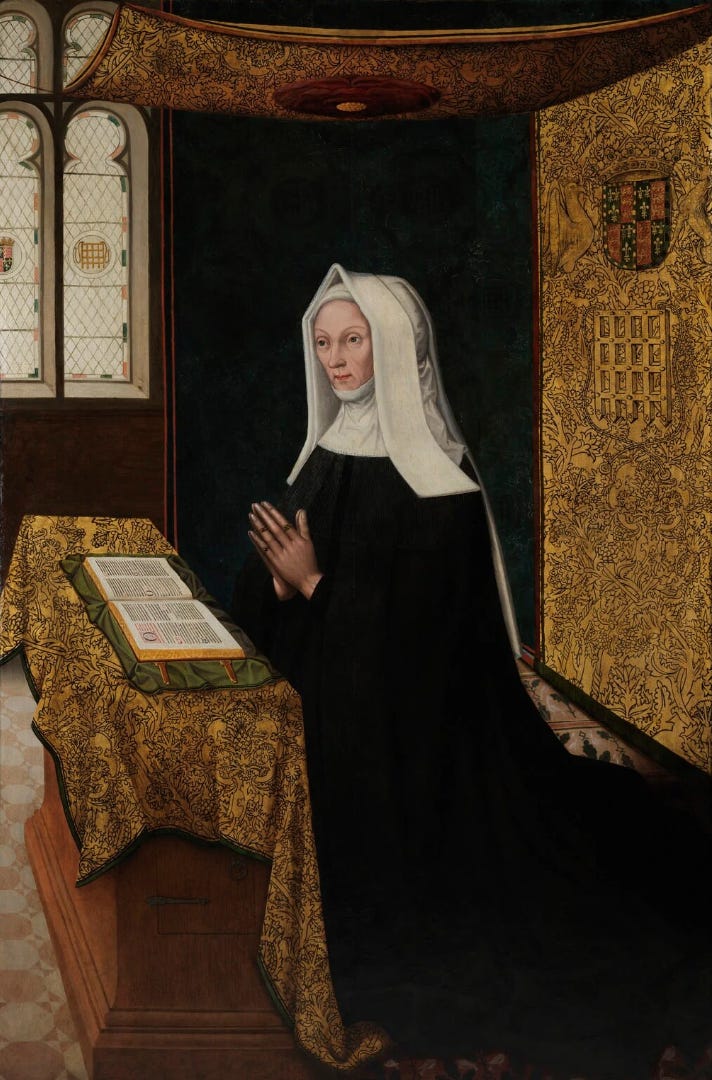When I wrote about the Empress Matilda recently, a thoughtful reader sent me a message to ask why I had not written about today's subject. As soon as I read the note, I realised I had to. For Lady Margaret is of supreme importance and interest. How we are governed today depends upon actions she took in the turbulent years of the Wars of the Roses.
Lady Margaret was born on the 31st May, 1443, and lived to see the first few months of her grandson Henry VIII's reign, dying on the 29th June, 1509, at the good age for the period of 66. Her lineage connected her to royalty, she was the great-granddaughter of John of Gaunt, son of Edward III, “time-honoured Lancaster” in Shakespeare's words, through his third wife and long-term mistress Catherine Swynford. Although their children had been born illegitimately, they were legitimised both by a Papal Bull issued by Boniface IX in 1396, and an Act of Parliament approved by Richard II in 1397. Subsequently, in 1407, Henry IV declared that the children were legitimate in all things save succession to the throne.

As the only daughter of John, Duke of Somerset, who died in 1444, possibly by his own hand, she was a substantial heiress and, through her mother, she had five half-siblings, the children of Oliver St. John, and was close to that family for her whole life.
As an heiress, she was a valuable marriage property, and Henry VI married her to his half-brother on his mother's side, a man with no claim to the English throne, Edmund Tudor, who was twelve years her senior. They married when she was twelve, and she became pregnant at this very young age, but Edmund died before his son Henry was born, an event that he and his mother were lucky to survive.
Margaret first met Henry VI when she was aged about nine. It is recorded that she was impressed by two things about his court, one was the important role played by women in it, and the other was his sanctity, and she strongly supported his canonisation in later life.
Widowed before the age of fourteen, Margaret had two more dynastic marriages (her first betrothal, when she was a mere child, to John de la Pole, does not really count) to Henry Stafford and to Thomas Stanley. However, Lady Margaret never bore any more children, and it is thought that the damage done during the birth of Henry made this impossible.
These marriages and her ancestry inevitably brought her into the politics of the Wars of the Roses, which began in 1455. Although Edmund had died, his closeness to the Lancastrian king placed Margaret under constant suspicion from the Yorkists, and she was almost entirely separated from her son until he became king in 1485.













